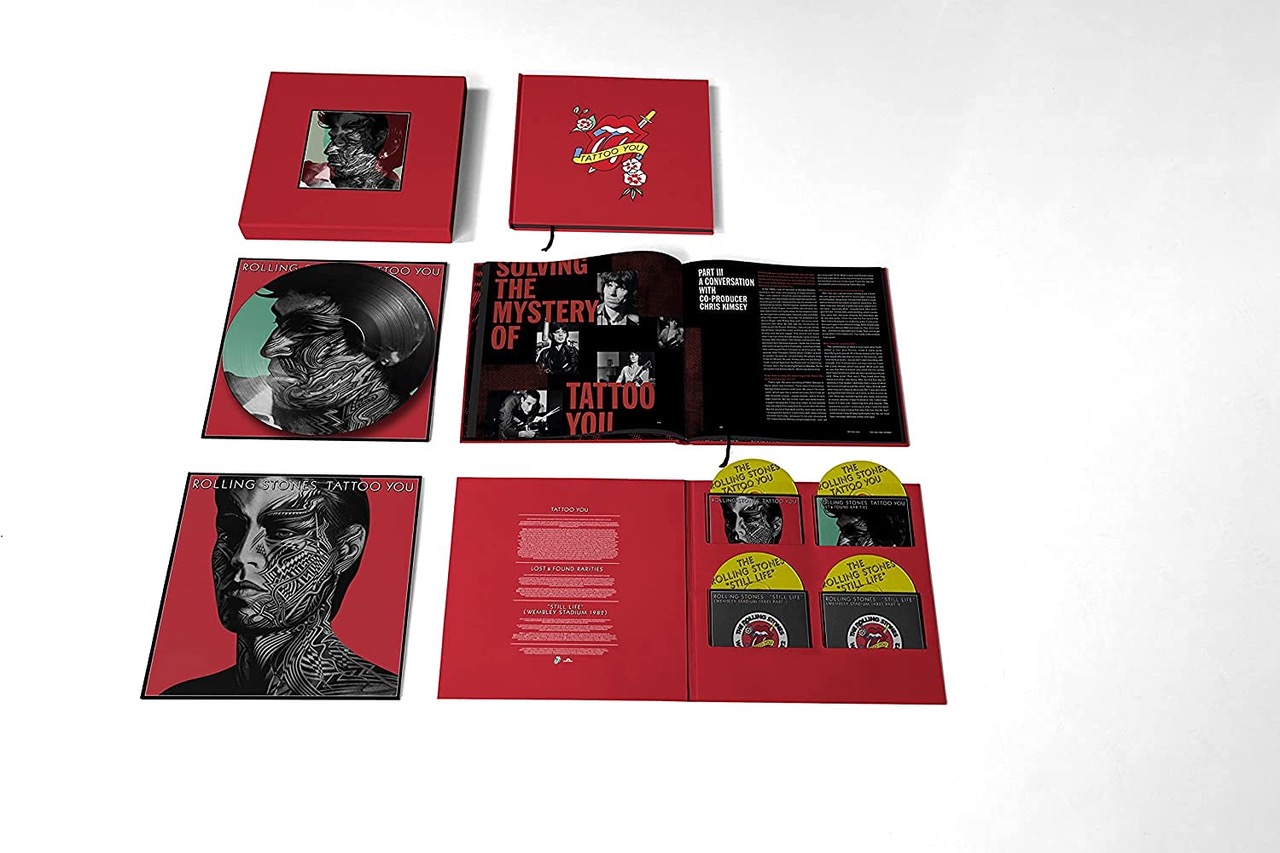Given the way the Rolling Stones’ Tattoo You came together, this 1981 album could have easily ended up as a disjointed mess. The group needed a successor to 1980’s Emotional Rescue to fulfill contractual obligations and because they had a U.S. and European tour set to start in September of 1981. But time was short, and the band’s members were reportedly not getting along particularly well. As a result, Tattoo You wound up being patched together from recordings left over from earlier sessions. Some were outtakes from Emotional Rescue (which itself included leftovers) and its 1978 predecessor, Some Girls; others dated from as far back as 1972.
Those vault picks were well chosen, however, and the Stones improved them by going into the studio to enhance their vocals and instrumentation. As a result, Tattoo You – which on the original vinyl delivers six rockers on the A side and five mellower numbers on the flip – turned out to be pretty darn good. No, it’s not quite as focused or as satisfying as the Stones’ 1960s and early 1970s classics, but the record – which topped charts in the U.S. in 1981 and spawned several hit singles – is understandably often cited as the group’s last great album (though this writer would give that distinction to Some Girls).
While many fans and critics consider the lead-off track, “Start Me Up,” to be a highlight of the album, it has never seemed like one to yours truly, its memorable opening Keith Richards guitar riff notwithstanding. More interesting are numbers like the funky, Jimmy Reed–influenced “Black Limousine”; the soulful “Worried about You,” which incorporates Jagger’s falsetto; “Tops,” a Goats Head Soup reject from 1972; and “Slave,” which features Billy Preston’s organ and jazz saxophonist Sonny Rollins. (There are apparently also backing vocals by Pete Townshend, though you’d never know that without reading the credits.) And then there’s “Waiting on a Friend,” the album’s closer and best track, which features excellent vocal work by Mick Jagger, Nicky Hopkins on piano, and two terrific sax solos by Rollins.
A 40th anniversary “super deluxe edition” of the album comes loaded with carrots for anyone who might want to consider upgrading an old copy. Packaged in a sturdy slipcase, it includes a picture-disc vinyl copy of the LP; an oversized 124-page hardcover book with essays, interviews, and abundant tour photos; and four CDs. The first of these contains a 2021 remaster of the original album while the second delivers nine previously unreleased tracks. The two remaining CDs preserve a two-hour, 25-song June 1982 concert at London’s Wembley Stadium.
The outtakes disc is consistently good, though there’s probably nothing here that many fans would consider essential to own. It includes a markedly different early version of “Start Me Up”; several other hard-rocking originals; a likable piano-based Jagger/Richards ballad called “Fast Talking, Slow Walking”; and a cover of Dobie Gray’s 1973 hit, “Drift Away.”
The Wembley concert on the final two discs delivers more thrills than the outtakes CD – and many more than Still Life (American Concert 1981), a 1982 LP that draws on material from the same tour. For one thing, the Wembley recording is three times as long as the earlier 40-minute LP and, as such, it makes room for a much more expansive program, one that includes everything on Still Life plus another 15 numbers… and the performances suggest that months on the road left the Stones machine well oiled.
The tracklist embraces lots of standouts from the 1960s and early 1970s, such as “Under My Thumb,” “Let’s Spend the Night Together,” “Time Is On My Side,” “Let It Bleed,” “You Can’t Always Get What You Want,” “Tumbling Dice,” “Honky Tonk Women,” “Brown Sugar,” “Jumpin’ Jack Flash,” and “(I Can’t Get No) Satisfaction.” The set also draws five numbers from Tattoo You – “Neighbors,” “Black Limousine,” “Little T&A,” “Hang Fire,” and “Start Me Up” – and five from Some Girls, including “When the Whip Comes Down,” “Shattered,” “Beast of Burden,” “Miss You,” and “Just My Imagination (Running Away with Me),” the Stones’ cover of the Temptations classic.
Speaking of covers, the concert embraces several more of those, among them a reading of the Big Bopper’s 1958 hit, “Chantilly Lace,” that, as reinvented here, seems so well suited to the Stones that it could be mistaken for a Jagger/Richards original.
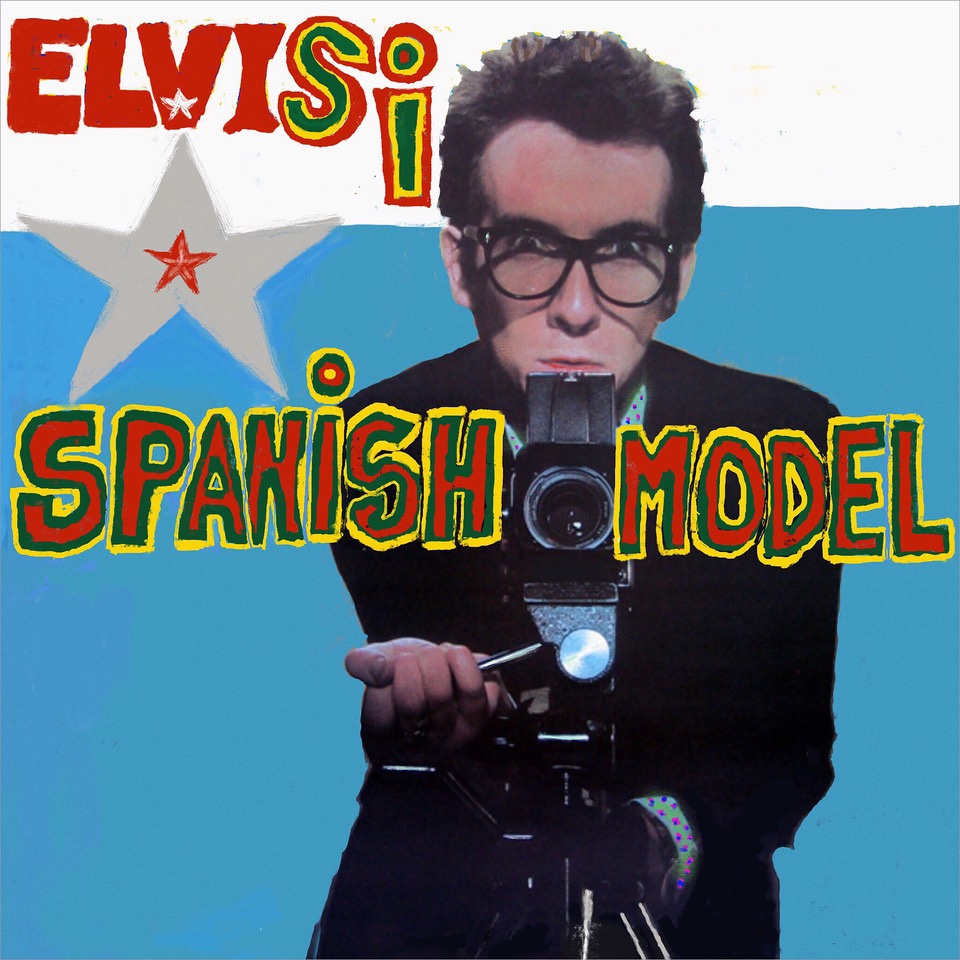
Elvis Costello’s ‘Spanish Model’
In 1978, Elvis Costello issued This Year’s Model, his second album and his first with the Attractions. A tour de force from start to finish, thanks to high-octane numbers like “Pump It Up,” “Little Triggers,” “(I Don’t Want to Go to) Chelsea,” and “Radio Radio,” it remains not only one of his best records ever but one of the best products of the entire new wave movement.
Recently, Costello and producer Sebastian Krys recruited 19 Latin pop and rock artists from Central and South America, plus a few from the U.S., to provide new vocals – entirely in Spanish – on top of the 42-year-old original album’s instrumentation. As a press release notes, “the concept represents what may be a first: an artist replacing their vocals with newly recorded performances by other artists singing in another language, backed by the original music.”
It’s an unusual idea, all right, and, man, did it work out. The resulting album, called Spanish Model, retains all the intensity of the original while adding fresh and vital Latin elements. It will undoubtedly help to make these Costello songs more accessible to south-of-the-border listeners. At the same time, it adds a new dimension for those who, like this writer, barely understand a word of Spanish.
As the saying goes, music is the universal language. And here’s proof.
Songs for the Season
Every year about this time, a new crop of holiday music begins to sprout. Among the most notable of this season’s offerings so far are releases from blues artist Mick Kolassa, the folk/bluegrass group Nefesh Mountain, and guitarist Jeremiah Lockwood.
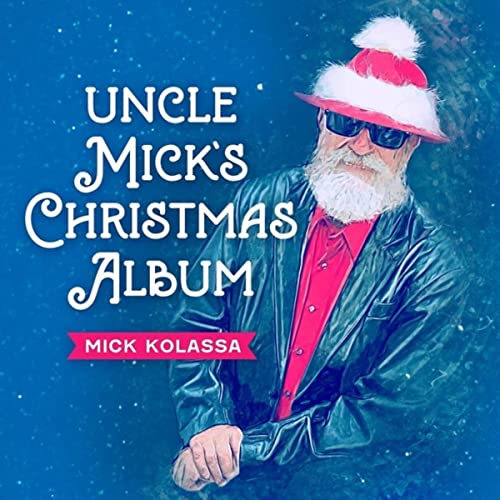
Uncle Mick’s Christmas Album includes songs that may conjure up a snowy New England, but it was recorded on hot summer days in Memphis by vocalist and guitarist Kolassa and a band that included guitarist/co-producer Jeff Jensen as well as a bassist, keyboard and harmonica players, a drummer, and a trumpeter. Only a few of the selections – such as the classic “Merry Christmas Baby” and a couple of Kolassa originals – started life as blues tunes, but the group puts a blues slant on the entire program, which includes such holiday favorites as “Frosty the Snowman,” “Jingle Bells,” “Winter Wonderland,” and “Have Yourself a Merry Little Christmas.” The last track, the instrumental “Beale Street Christmas Jam,” finds the band members taking turns transforming an assortment of holiday classics into 12-bar blues.
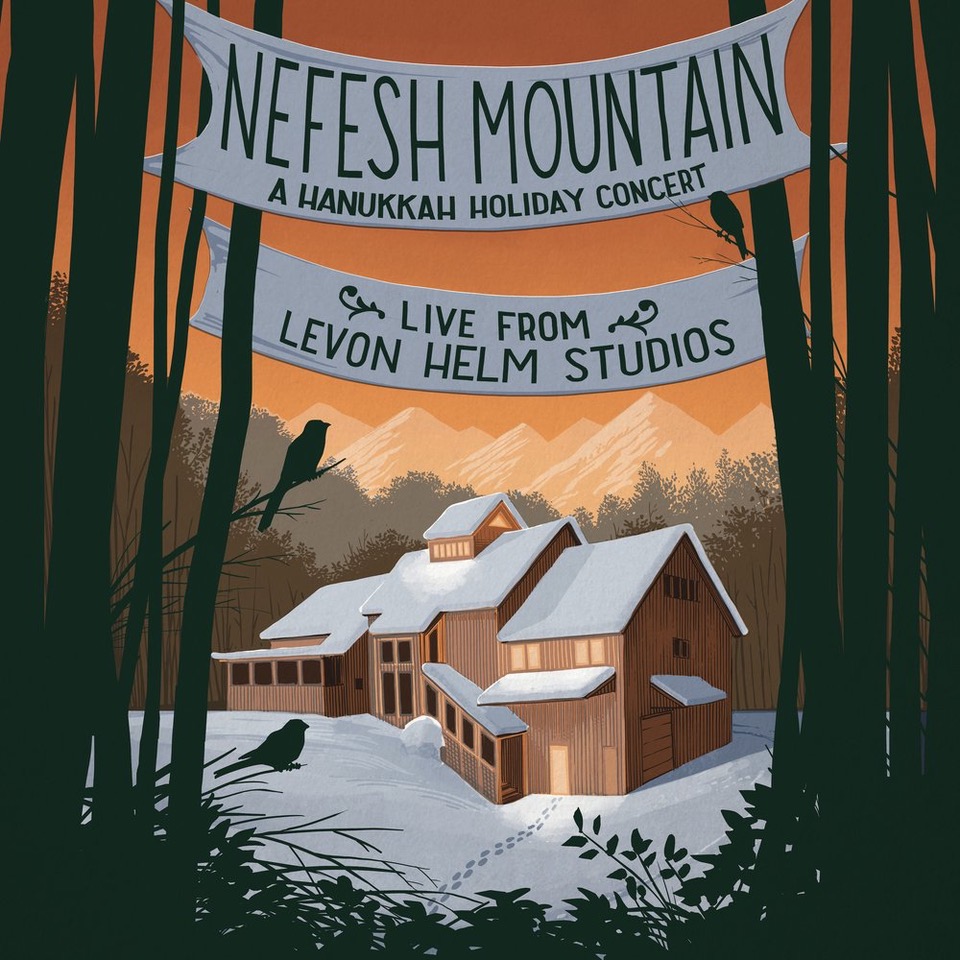
The bluegrass/folk group Nefesh Mountain delivered their debut album, Songs for the Sparrows, only a few months ago, but they’re already back with another full-length release, Live from Levon Helm Studios: A Hanukkah Holiday Celebration. The set includes Hanukkah-themed originals as well as two songs about the holiday by Woody Guthrie. (While not Jewish, Guthrie married a Jew, raised his children in the religion, and wrote many songs about Jewish history and holidays.) Though the album closer – a cover of Bob Dylan’s “I Shall Be Released” – has no apparent relationship to the holiday, it provides a rousing finale to the set.
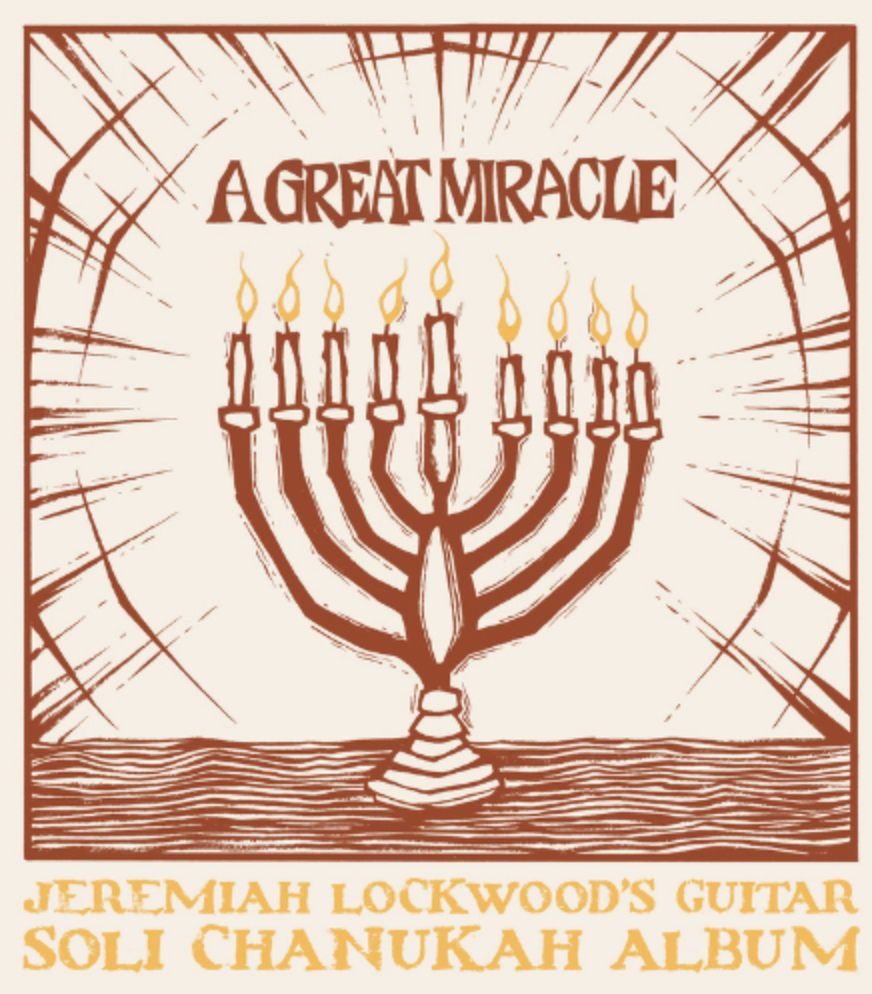
The New Possibility: John Fahey’s Guitar Soli Christmas Record, a 1968 classic by the late fingerstyle guitarist, inspired the creation of the similarly styled and thoroughly enjoyable A Great Miracle: Jeremiah Lockwood’s Guitar Soli Chanukah Record. Like Kolassa’s album, this one has roots in the blues – Lockwood apprenticed under Piedmont blues guitarist Carolina Slim – but it feels closer to folk. Lockwood performs solo on seven of the album’s eight instrumental songs, one for each night of Hanukkah; on the eighth, “Little Dreydl,” guitarist Luther Dickinson of the North Mississippi All-Stars lends a hand.
Jeff Burger’s website, byjeffburger.com, contains five decades’ worth of music reviews, interviews, and commentary. His books include Dylan on Dylan: Interviews and Encounters, Lennon on Lennon: Conversations with John Lennon, Leonard Cohen on Leonard Cohen: Interviews and Encounters, and Springsteen on Springsteen: Interviews, Speeches, and Encounters.


